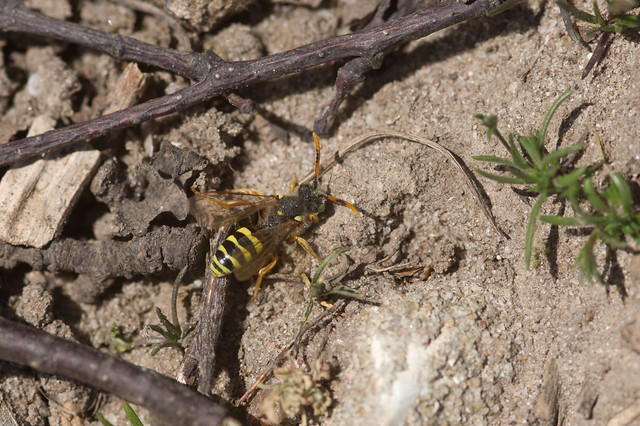The first order of play was to try and fill an increasingly embarrassing hole in my mammal list, in the shape of a certain fish eating mammal. I dutifully made my way to Island Mere in time for dawn on the first morning, expecting to have the place to myself, only to find no fewer than five people had beaten me to it! We settled in to scanning the edges of the reedbeds, trying not to get distracted by the ducks, coots and Marsh harriers.
After around an hour's wait a dark head briefly broke the surface, disappearing as fast as it appeared, but leaving a trail of bubbles heading tantalising in our direction. To my delight a stunning dog otter then emerged from the reeds onto a mud bank right in front of the hide, although it was immediately scared away by the surge of movement in the hide that its appearance had provoked.
Despite repeated morning and evening stops at Island Mere, that was the only otter encounter I had, but Minsmere has plenty of other wildlife to see. Spring had come late to the Suffolk coast, and the chill air meant that there weren't too many insects to be found, but on a bank on the edge of the car park I was delighted to find a colony of the mining bee, Andrena flavipes, attended by its cuckoo bee Nomada fucata, a species I've never seen before.
 |
| A male Nomada fucata |
Of course there were also plenty of birds to see, this being the RSPB's flagship reserve for good reason. Alongside the iconic avocets on the scrape were a collection of other waders, most of which were on route to the arctic for the summer. Looking particularly swanky were the godwits, mostly ginger-fronted Black-tailed, but with a couple of brick red Bar-tailed in the mix as well.
 |
| The obligatory Avocet |
 |
| A fine looking black-tailed godwit |
Across the rest of the reserve there were plenty of other birds to see, Ring Ouzels on their way to the uplands, Bearded Tits pinging in the reedbeds and a cuckoo fresh in onto the dunes to name but a few. The highlight of the highlights though was a classic Minsmere bird, a bird that went extinct in the 19th century, and was perilously close to repeating the trick in the 1990s, dropping to a low of 11 booming males in 1997. It now ranks as one of the great conservation success stories with the population recently passing 150 booming males. I'm talking of course about the Bittern, elusive skulker of the reedbeds - well apart from this one, which spent half an hour standing brazenly out in the open.
 |
| A not so skulking bittern |
All in all it was a fantastic week, and one I'll hopefully get a chance to repeat soon - I just need to persuade the right people that they need a bit more training!
The avocet - what a stylish being!
ReplyDeleteThe avocet - what a stylish being!
ReplyDelete